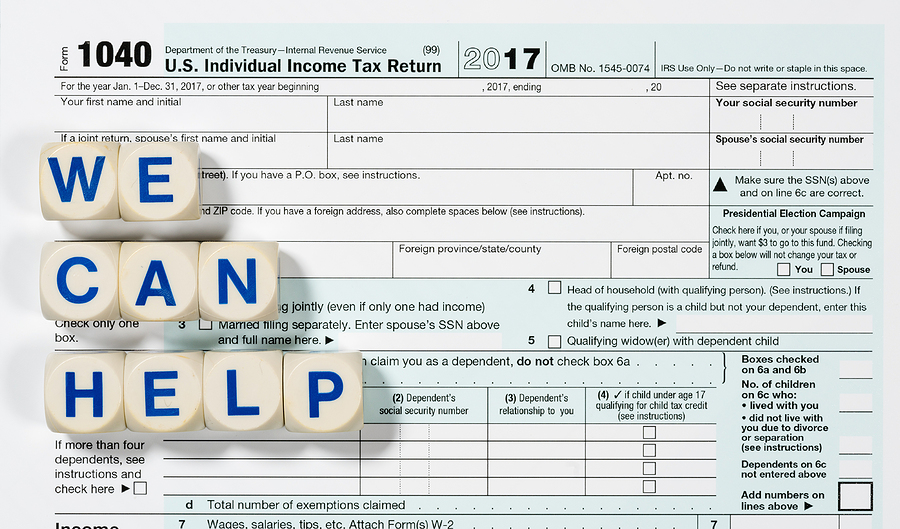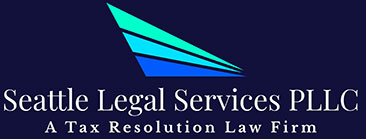Request Tax Relief

Behind on your taxes? The IRS has a range of different options to help you get back on track, but to apply, you need to file the right form. When you work with a tax professional, they’ll help you select the best relief program for your situation, and they’ll also help you file the forms.
Want to take a DIY approach? Planning to work with a tax pro but wondering what forms they’ll have you file? In either case, here’s a look at the most popular IRS tax relief programs and the forms you need to apply. To get help now, contact us at Seattle Legal Services, PLLC today.
Forms to Set Up Payments on Tax Debts
If you can’t pay in full, the IRS may let you make monthly payments on your tax debt. The forms you need to file vary based on how much you owe and a few other factors. Here is an overview.
Online Payment Agreement Application
This is not a paper form. Instead, it’s an online application for individuals and businesses to set up monthly payments. To apply online, individuals must owe less than $50,000 in tax, interest, and penalties and must be able to pay off the debt within seven years. Generally, businesses must owe less than $25,000 and be able to pay off the debt within two years.
If you owe less than $100,000 but you can pay it off within 180 days, you can also use this application to request payments. Typically, if you indicate that you can pay off your tax debt in the allotted time frame, the IRS will approve your request as long as you are up-to-date on your filing requirements.
Form 9465 (Installment Agreement Request)
You can use Form 9465 to apply for a payment plan if you don’t qualify to apply online or if you don’t want to apply online. You can fill out this form and mail it to the IRS, but for faster results, you may want to fill out the form and call the IRS with the info. Sitting on hold will take time, but typically, it’s still faster than waiting for the mail.
Form 433-F (Collection Information Statement)
When applying for an installment agreement, you must complete Form 433-F if any of the following apply:
- You can’t afford to make the minimum monthly payment as shown on line 10 of Form 9465.
- You owe over $50,000.
- You owe over $25,000 and don’t plan to make your monthly payments with direct debit from your bank account.
Note that the instructions for Form 9465 say that you must complete this form if you owe over $50,000, but recent guidance from the IRS suggests that you only need to complete this form if you owe over $250,000 or a revenue officer has been assigned to your account.
Form 433-D (Installment Agreement)
The IRS will send you Form 433-D to finalize your installment agreement. This one-page form outlines the details of your installment agreement such as payment amount, date of payments, and how long you need to pay off the tax debt. It also collects details about your bank account so that the IRS can debit the monthly payments from your account.
IRS Offer in Compromise Forms
An offer in compromise is when the IRS lets you settle your tax bill for less than you owe. There are three different ways to get an offer from the IRS, and they all require different forms.
Form 656-B (Offer in Compromise Booklet)
The 656 offer in compromise booklet contains everything you need to apply for an offer in compromise due to an inability to pay or effective tax administration. The booklet includes Form 656 where you make your settlement offer. It also includes Forms 433-A (OIC) for individuals and 433-B (OIC) for businesses.
If you apply based on an inability to pay, the IRS will want you to pay the very most that you can afford, and this number will be based on your assets and disposable income. If you apply based on effective tax administration, you will have to explain why forcing you to pay in full would be unfair and ineffective tax policy.
Form 656-L (Doubt as to Liability)
If there is a legitimate doubt that you owe the tax bill, you may be able to get an offer by filing Form 656-L. With this relief form, you need to explain why the tax liability is in doubt, but you don’t need to provide any financial information.
Penalty Relief Forms
IRS penalties add up quickly. With personal income tax, they can get up to 50% of your balance, and with business taxes, the fees can sometimes be even higher. Here’s the form you need to apply for relief.
Form 843 (Claim for Refund and Request for Abatement)
Use Form 843 to request relief from penalties that have accrued on your account. Generally, the IRS will remove penalties if it’s a first-time offense or if reasons beyond your control led to the penalties. You can also use this form to request certain types of refunds.
IRS Relief Forms for Financial Hardship
Can’t afford to pay anything right now? Well, the IRS understands that sometimes, you simply cannot pay your taxes. Depending on the situation, you may need to request a payment extension or ask for currently not collectible status. Here are the forms you should use.
Form 1127 (Extension of Time for Payment of Tax Due to Undue Hardship)
If you need more time to pay due to hardship, file Form 1127. This hardship form asks how much you owe and which type of tax return you filed. Then, it prompts you to explain why paying the tax would cause economic hardship. Be as detailed as possible when making your case.
Forms for Currently Not Collectible Status
The IRS doesn’t have a specific form to request currently not collectible status. Instead, you should contact the agency over the phone or through the mail. Typically, the IRS will require you to complete one of the following Collection Information Statements (CIS):
- Form 433-A (Collection Information Statement for Wage Earners and Self-Employed Individuals)
- Form 433-B (Collection Information Statement for Businesses)
These forms request detailed info about your financial situation. If the IRS determines that you really cannot afford to pay, they will mark your account as “currently not collectible”, and they will not try to collect the taxes unless your financial situation improves.
Relief Forms to Respond to Unwanted Collection Actions
If the IRS initiates a collection action, you may be able to dispute it or try to reverse it. Here are some of the forms that you may need to use.
Form 12153 (Request for Collection Due Process or Equivalent Hearing)
If the IRS files a tax lien or levy against you, the agency may send you a notice that outlines your right to a hearing. To request a hearing, file Form 12153 by the deadline on the notice. If you miss the deadline, you can use this form to request an equivalent hearing.
In either case, be prepared to propose alternatives to the collection action. For example, if the IRS proposes a levy, you should offer to set up monthly payments instead.
Form 9423 (Collection Appeal Request)
You can use Form 9423 to appeal many collection actions including the following:
- Tax liens.
- Property seizures.
- IRS denial of your request for a lien subordination, withdrawal, discharge, or non-attachment.
- IRS denial of changes you requested to your payment plan.
- IRS termination of payment plans.
- IRS rejection of your request to return seized property.
Before filing this form, you may need to request a meeting with a manager. Then, if you can’t resolve the issue with them, you can file this form, but you should do so within 10 days of talking with them.
Form 12277 (Application for Withdrawal of Federal Tax Lien)
If you want the IRS to withdraw a tax lien, you can file Form 12277. This form lets you ask for a withdrawal if you’re setting up a payment plan, the lien was incorrect, or the withdrawal will make it easier for you to pay off the bill. You need to provide a written explanation of why the IRS should consider the withdrawal.
Form 14135 (IRS Application for Certificate of Discharge of Property from Federal Tax Lien)
You should file Form 14135 if you want the IRS to discharge a lien from a specific piece of property. On the form, you will describe the property and explain why the IRS should agree to the discharge.
Help From the Taxpayer Advocates
Need help dealing with the IRS? Not getting a response from the agency? Working with an IRS employee who doesn’t respect your rights? Then, you should reach out to the Taxpayer Advocate Service.
Form 911 (Request for Taxpayer Advocate Service Assistance)
The Taxpayer Advocates are an independent part of the IRS. They help taxpayers who cannot resolve their case through the usual channels. You can ask for their help by filing Form 911.
When to Hire a Tax Professional
The links above take you to the forms you need to file, and in many cases, the forms may be straightforward. So, how do you decide if you need help? Well, if any of the following apply, you may want to reach out to a tax professional:
- You aren’t sure which form to file.
- You don’t know how to complete the form.
- You can’t afford to pay off your taxes in full and want guidance.
- You’re applying for an offer in compromise — This program has less than a 50% approval rating, and for best results, you should always work with a pro.
- You’re applying for a payment plan and not sure if you can really afford the payments — A lot of people default on payment plans, and often, they would have been better off applying for a different relief program.
- You have doubts about the tax liability — Disputing a tax liability requires in-depth knowledge of the tax law.
You have received a CP40 notice and you’re not sure if your account is in collections
Ultimately, you should consider your comfort level. If you feel confident filing your own forms, go for it. If you want to make sure that you’re applying for the optimal program and completing the forms correctly, you should reach out for help.
Get Help With IRS Tax Relief Forms
To get help filing these forms and resolving your IRS tax problems, talk with our tax attorneys today. At Seattle Legal Services, PLLC, we have extensive experience helping people with IRS and state tax issues. To learn more, contact us for a consultation today.
